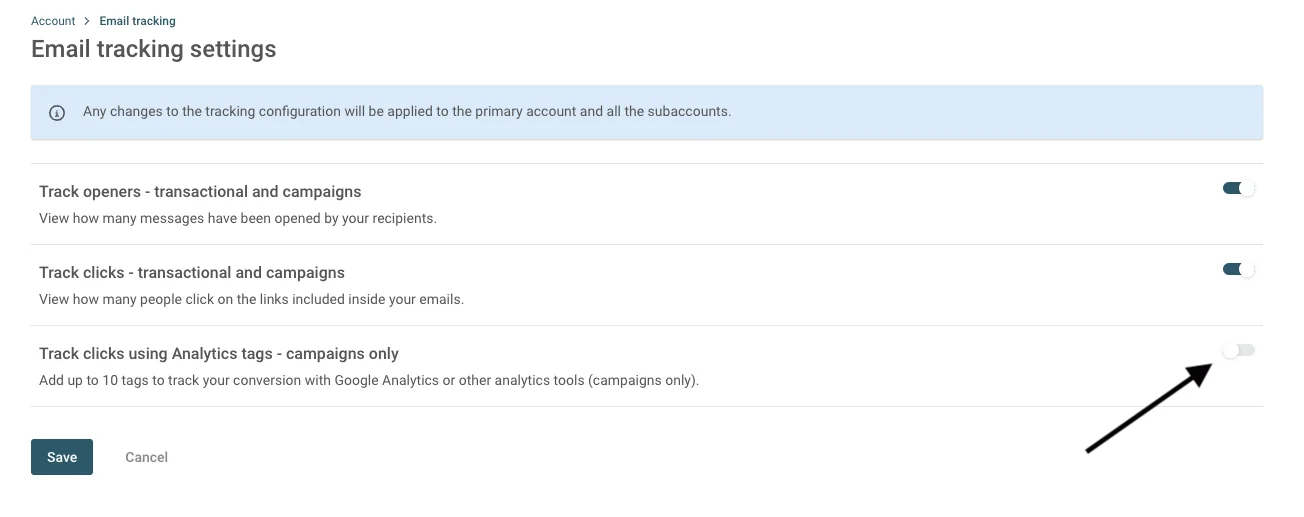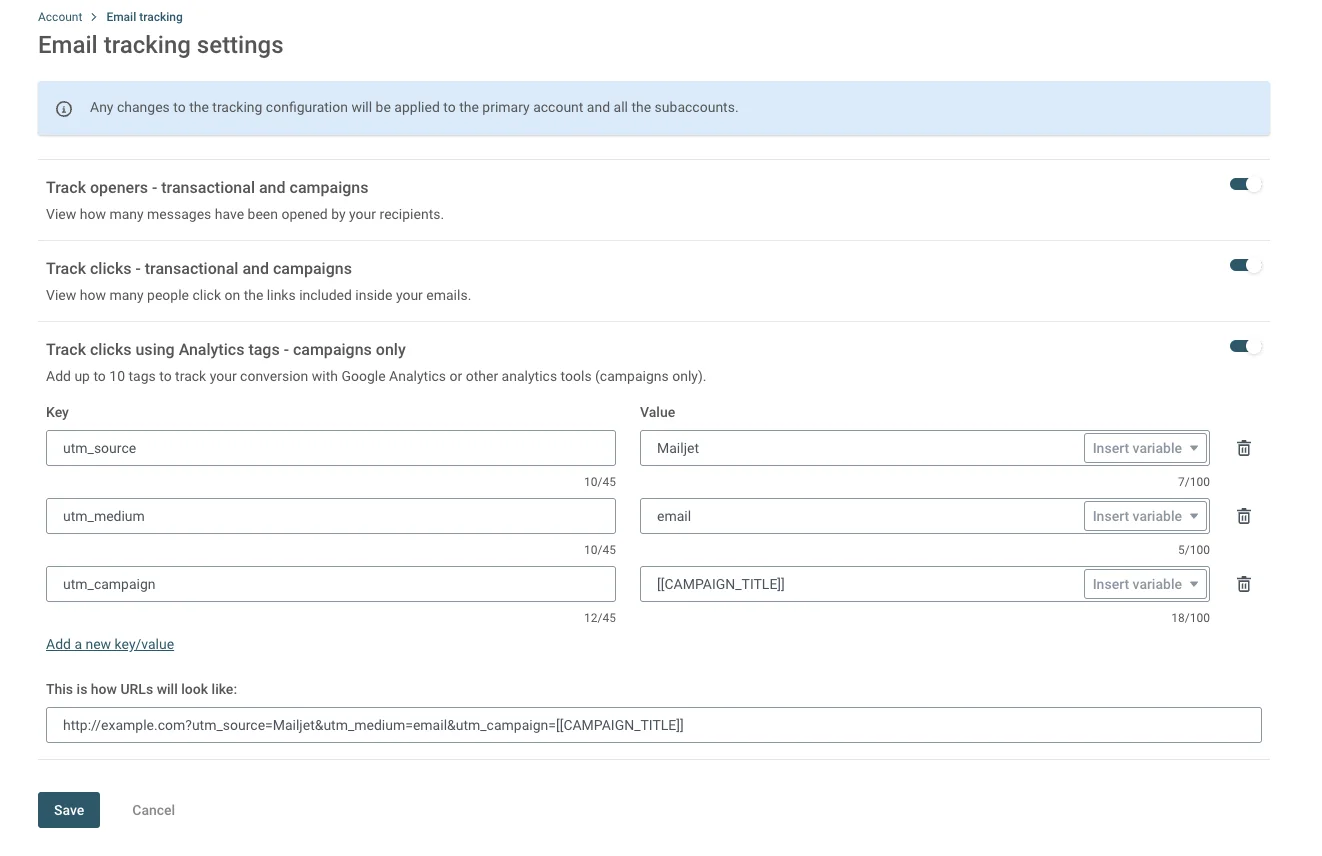Email best practices
Why you should use UTM tagging on your campaigns

Email best practices

Data doesn’t lie. Tracking means optimizing and getting better results.
While we encourage you to set up and follow metrics, we also want you to be able to track them easily so you can consistently get great results. Because emailing doesn’t stop with pressing “send”. You want to know who opened your message and which CTAs generated the most clicks.
Thankfully, most email service providers (ESP’s) offer you those KPIs out the box, such as open, unsubscribe, click or bounce rates. However, what do you do if you’d like to go deeper? To know the exact path people took after clicking your newsletter CTA? Or which pages on your website they visited and what they purchased?
Well, we have a solution for you – UTM tagging.
“UTM” stands for “Urchin tracking module” and is a snippet of code added to the end of a URL. These small bits of text, also known as UTM parameters, can then be read by your analytics tool (typically Google Analytics) to track the journey your visitors take across your website.
An example of a URL link enriched with utm parameters looks like this:
https://www.yourwebsite.com/yourpage/contentofthepage/?utm_source=weeklynewsletter&utm_medium=email&utm_campaign=promospring2020&utm_term=skincare&utm_content=logolink
In this URL, some parameters are mandatory and others optional:
You are already able to see your audience’s behavioral information thanks to our advanced statistics (sent, opened, clicked, bounced, etc.) so why add an extra layer with Analytics Tracking?
Well, wouldn’t it be nice to see what subscribers do after they open and click on your email? And, unless you’ve added UTM parameters to your campaign links (or applied some kind of magic we are not aware of yet), you won’t be able to.
UTM parameters help you track the effectiveness of your campaigns and observe your customers’ journey across your website. They can be used across almost all marketing channels: SEA ads, social ads, earned backlinks…and of course, email.
By effectively tracking traffic across your website, you can more accurately attribute ROI to the highest performing campaigns and channels. If you must make a change to your strategy, you’ll be able to use data to back up your decision.
The reason we use Mailjet for our newsletter is that we really like the drag and drop editor, it’s straightforward, it’s easy and intuitive to use and there’s great campaign reporting and analytics. We also like the security of the platform and the deliverability.
If you’re new to the UTM tracking game there are some common pitfalls you’ll want to try and avoid when setting up your campaigns. We’ve listed a few of them below:
UTM link expert, Milena Mitova, delved into why tracking emails beyond the first click is paramount in maximizing campaign ROI in her Email Camp session.
To easily start tracking your email campaigns in your favorite analytics tool, there are a couple of simple steps you’ll need to follow:
Step 1: Make sure you are on a Premium plan and you are logged in with your master account. If you’re not on Premium yet… what are you waiting for?
Step 2: Go to your account by clicking on your initials on the top right corner and then select ‘Account Settings’ then ‘Email tracking settings’. You can easily access that through this link too. Once there, you’ll find a list of tracking options, including the latest addition: ‘Analytics tags’. Click to enable it.

Step 3: Once it’s enabled, an additional section with parameters will appear.

We prefill the three first fields with default UTM tags that Google Analytics operates with, but you can change them if you use another system, delete and even add extra fields (up to a total of 10) to have optional parameters as well.
You’ll see two components for each UTM tag per row: “Key” and “Value”. If you want to use an UTM like “utm_campaign”, make sure it’s filled with [[CAMPAIGN_TITLE]] so everything runs automatically.
Feel free to personalize all the parameters depending on your needs and on the analytics tool you are using, so you create the optimal tracking for your streams.
Here is an example in which we have only included the prefilled sections:

Once you complete the fields and shape the structure of your UTM tag, hit “Save”. That’s it, you’re all set. Every link in every campaign sent will be automatically enriched with the UTM tags.
Once enabled and configured, Analytics Tracking will be activated for your master account as well as all your sub-accounts! You’ll be able to follow your audience’s journey and improve your ROI by setting up Analytics Tracking for all your email marketing campaigns.
UTM tagging is only available on Premium plans, and only applicable for email campaigns: marketing campaigns, or transactional emails grouped as a campaign. To use it, you can sign up or upgrade to any Premium plan.
Want to boost your email strategy? Make sure you get the best engagement and ROI. Our premium features help you create incredible campaigns.